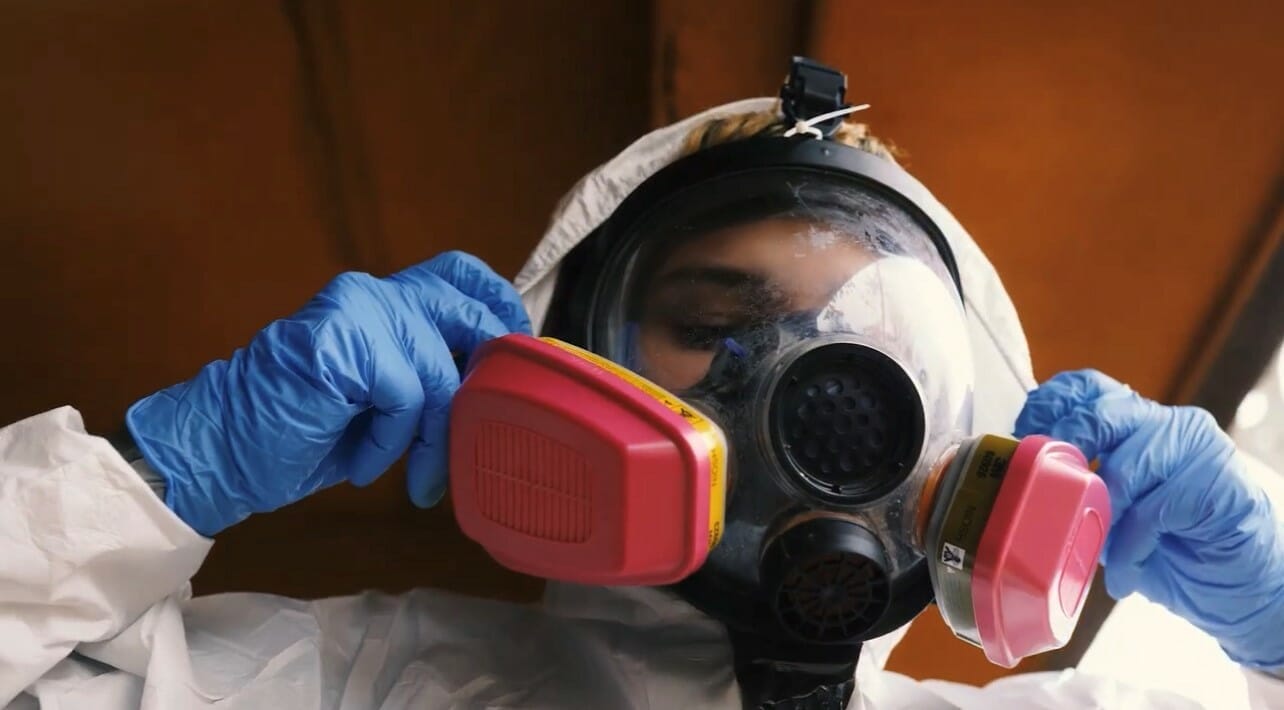
Working in a biohazard suit is a demanding and crucial job, particularly when considering the conditions that arise during the hot summer months. These protective suits are essential for safeguarding workers against hazardous substances, pathogens, and potentially life-threatening situations. However, it is crucial for companies to prioritize the health and safety of their employees who work in such challenging environments. In this blog post, we will explore the conditions of working in a biohazard suit, especially during the summer, and how companies strive to ensure the well-being of their workers.
Biohazard suits are designed to create a sealed environment, protecting workers from external threats. Unfortunately, this also means limited ventilation, leading to increased body heat and perspiration. In hot summer temperatures, the risk of heat stress and exhaustion becomes significantly higher. An article by the CDC describes a study that details the heat strain and stress while working in biohazard suits.
No matter who you are there will be a temperature increase once you get into a biohazard suit and begin working. This increase will vary from person to person. Studies shown in the National Library of Medicine show that this increase can be between 11 degrees Fahrenheit and 20 degrees Fahrenheit. This would mean that on a hot 90-degree day you will be sitting in temperatures up to 110 degrees for extended periods of time.
Wearing a biohazard suit is very physically demanding. These suits are often heavy, restrictive in movement, and can cause fatigue and muscle strain. The discomfort can be further exacerbated by the heat and humidity during summer. When stepping into a biohazard suit, it is comparable to taking a greenhouse-like environment and containing it to a human-sized space. This can quickly lead to heat exhaustion.
Prolonged use of biohazard suits, combined with high temperatures, can lead to excessive sweating and dehydration. Maintaining hydration levels becomes critical for workers to perform their duties effectively and prevent potential health issues.
Working in a biohazard suit during the summer presents unique challenges for the individuals tasked with safeguarding public health and safety. However, Bio-One NW Indianapolis recognizes the importance of prioritizing worker health and safety. By integrating thorough training, cooling, hydration, health monitoring, and enhanced PPE, we can ensure excellent protection and support for workers in demanding environments. The ongoing efforts to enhance work environments and equipment demonstrate a commitment to the well-being of those working tirelessly in biohazard suits, ultimately contributing to a safer and healthier working environment.
If you have any questions, you can reach out to us at any time. We are always here to help.
"Help First, Business Second"
24 / 7 / 365
(317) 435-1611

Having been closed due to the pandemic, the National Law Enforcement Museum and Memorial (NLEMM) re-opened with the new Post-9/11 Exhibit: The Evolution of American Law Enforcement. On August 26, Bio-One was invited to a private opening reception to get a first-look and remember the brave men and women who ran toward danger 20 years ago.
As described on the NLEMM website, the Post-9/11 exhibit marks the 20th anniversary of 9/11 and honors the officers who rose to the challenge that day. This will be the first exhibition to focus on the significant changes to U.S. law enforcement that occurred in the aftermath of the 9/11 attacks.
One of the most impactful displays in the exhibit is a wall of photos depicting all the members of law enforcement who died as a result of 9/11. As described by Police1.com, 72 officers killed on September 11, as well as 236 officers who died of illnesses contracted while working in the hazardous conditions at the WTC.
There are 20+ artifacts on display that include airplane fragments from Flight 93, a steel beam from the World Trade Center, a limestone block from the damaged section of the Pentagon and part of the damaged food cart from Flight 93 when passenger Todd Beamer famously said, “Are you ready? OK. Let's roll.” (Police1.com)
Bio-One is a proud 2021 corporate partner of the museum. To learn more about the exhibit and how you can help preserve the history of law enforcement, visit NLEOMF.org.